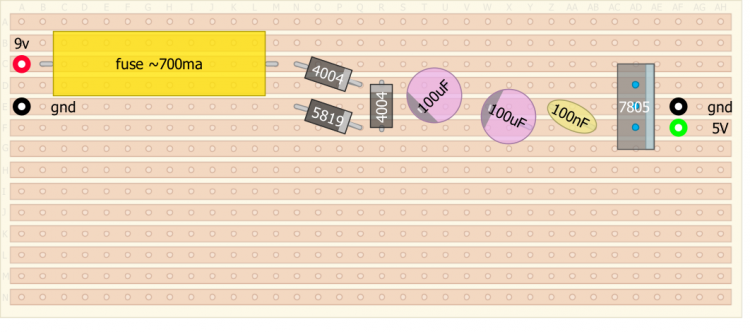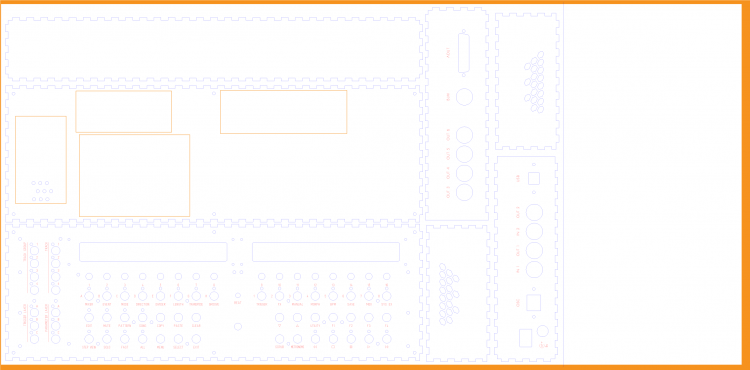
pawaga
Members-
Posts
23 -
Joined
-
Last visited
Profile Information
-
Gender
Male
-
Location
France
Recent Profile Visitors
The recent visitors block is disabled and is not being shown to other users.
pawaga's Achievements

MIDIbox Newbie (1/4)
2
Reputation
-
hi, here is a bug report. i made a fresh session with 4 drum tracks (64/2*64) on group 1. Copied the 4 track from group 1 to groups 2 3 4. On group 1, everything is fine, but in groups 2-4, track 3 has a weird behaviour : active steps are skipped. I joined a zip containing the session. Best regard. mbseq_debug.zip
-
hi, here is what i've done with some pieces of wood, aluminium and acriglass i had around, very cheap and yes, it's really usefull :) that way, i can use my seq also flat when i wish.
-
MIDIbox SEQv4 - Wilba Frontpanel - Round Buttons - Request
pawaga replied to jzurd0's topic in MIDIbox SEQ
@mongrol yes it's possible to shave a bit the panel, maybe 1cm on each side, if you tie the cs to bottom. it would be a cool evolution. i did it that way because i'm too lazy to redesign the whole thing ! here is the original acrylic layout : @EsotericLabs i don't think i will use an ethernet module as i don't have use of the OSC and probably won't..i did not knew that when i build it, so.. i put an ethernet plug to fill the hole, to avoid *bugs* to come in. You will says that there are some holes on the sides, but those are for bees. -
MIDIbox SEQv4 - Wilba Frontpanel - Round Buttons - Request
pawaga replied to jzurd0's topic in MIDIbox SEQ
about the usb panel mount screw holes, i send an updated version of the svg file in the original post, i'm not sure it's 100% perfect but it should be good now. Of course you should check with datasheets if possible. -
MIDIbox SEQv4 - Wilba Frontpanel - Round Buttons - Request
pawaga replied to jzurd0's topic in MIDIbox SEQ
yes it is ! cheapo panel mount usb and ethernet plugs, from the bay. *beware* of the screw holes for the usb adapter, they are a little bit too distant (~1mm each ; it works as it is but it should be better). Here is the regulator board layout, adapted from the ambika schematics : -
MIDIbox SEQv4 - Wilba Frontpanel - Round Buttons - Request
pawaga replied to jzurd0's topic in MIDIbox SEQ
@mongrol yes, the cs is mounted with 10mm standoff, the midi io and quad iic are mounted on 12 mm standoff. the core on 10mm standoff. there are also 6 extra standoff from cs to bottom, they are ~ 61mm long : 2x 25mm + 1x10mm + 1 washer to make it really tight here is a shoot of the inside : -
MIDIbox SEQv4 - Wilba Frontpanel - Round Buttons - Request
pawaga replied to jzurd0's topic in MIDIbox SEQ
yes, they are cheap, but there is a cost for that : they do not fit exactly with standard tact switch : i had to put some tiny piece of wood inside the caps to allow them to push correctly the switch.. not a big deal but it has to be said -
MIDIbox SEQv4 - Wilba Frontpanel - Round Buttons - Request
pawaga replied to jzurd0's topic in MIDIbox SEQ
the caps are chip one from ebay, like those : http://www.ebay.fr/itm/25-Pcs-Round-Tact-Tactile-Piano-Key-Switch-Caps-Pushbutton-Covers-Gray-/231735004579?hash=item35f47b8da3:g:zS0AAOSwA4dWMYFE the top diameter is 9mm. -
MIDIbox SEQv4 - Wilba Frontpanel - Round Buttons - Request
pawaga replied to jzurd0's topic in MIDIbox SEQ
hi, if you want to go the ponoko route, i made a design with rounded buttons.. It can be a bit better as the button holes are a bit loo large for mine (~0.5mm, but it's still good enough) : the laser beam size must be included, so beware of that.. Fortunately, here is the svg file so you can modify it if needed :) seq_enclosure_pvi_3.svg.zip seq_enclosure_pvi_3b.svg.zip -
hi, some troubles with the USB Host support here : i use a k-board which works fine on a pc. if used with the midiseq, sometimes, the noteoff or noteon events are lost. It seems to happen randomly though only when the sequencer is running...
-
hi, i just wanted to share my view : some times ago, i experimented a custom firmware which use the delay layer to record that human touch ; that way we can use the benefit of the 384ppqn, for any step resolution.. it would also be much easier that way to view and modify the quantization, re-quantize the whole pattern, use different quantization methods... The way i did it is just a hack and it would be better written in a proper way (with a bipolar % of the the step length, from -50% to +50%..). Maybe an idea for the seqV4+ ? best regards, Patrice
- 8 replies
-
- ticks
- unquantized
-
(and 2 more)
Tagged with:
-
hello Thorsten, thanks for your help, i understand now. yes, i tested it and it work now for different clock dividers ! i also added the quantization : } else { //handle the delay layer // if a delay layer is present, record to it u8 num_p_layers = SEQ_PAR_NumLayersGet(track); u8 *layer_type_ptr = (u8 *) & tcc->lay_const[0 * 16]; int par_layer; u8 instrument = 0; u16 delay; for (par_layer = 0; par_layer < num_p_layers; ++par_layer, ++layer_type_ptr) { if (*layer_type_ptr == SEQ_PAR_Type_Delay) { delay = ((SEQ_BPM_TickGet() - t->rec_timestamp ) * 96) / t->step_length; if( delay >= 96 ) delay -= 96; // because quantisation has put the event into the next step delay -= (delay * seq_record_quantize) / 100;//quantize it SEQ_PAR_Set(track, ui_selected_step, par_layer, instrument, delay ); break; } } } The next point i want to tackle is the pitch layer : discrete values are not very useful for that, it would be nice to glide values between two step...(for CCs as well) best regards Patrice
-
hi, the "delay" layer is not recorded in live rec mode, so i tried something : I added this in seq_record.c, around line 472 : } else { //handle the delay layer // if a delay layer is present, record to it u8 num_p_layers = SEQ_PAR_NumLayersGet(track); u8 *layer_type_ptr = (u8 *) & tcc->lay_const[0 * 16]; int par_layer; u8 instrument = 0; u8 delay; for (par_layer = 0; par_layer < num_p_layers; ++par_layer, ++layer_type_ptr) { if (*layer_type_ptr == SEQ_PAR_Type_Delay) { delay = (SEQ_BPM_TickGet() - t->rec_timestamp) / 4; // not sure about the "/4", but give weird results if the delay val is too large SEQ_PAR_Set(track, ui_selected_step, par_layer, instrument, delay ); break; } } } it works but not very accurate... Anyway , so far, i like it! best regards Patrice
-
it works great now. thanks a lot !
-
About the nth feature, I think there is a problem with drum tracks : if i set a nth param on a step, it will work until another drum play on the same step.



